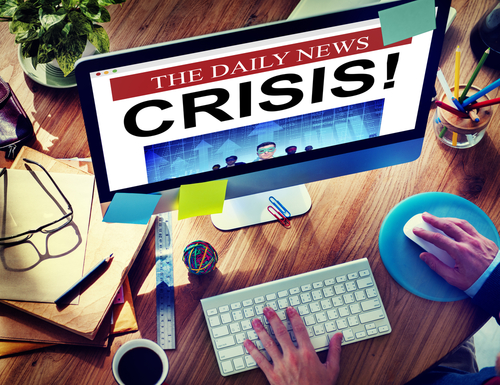Shedding light on “dark sites”
- January 20, 2015
- Author: Glenn Gillen, APR
- Category: Public Relations

Just as every large building should have an evacuation plan and every vehicle should have a roadside emergency kit, every organization that deals with the public should have a crisis communications plan. We hope you’ll never have to use it, but a crisis communications plan spells out exactly what actions to take and delegates specific tasks to key individuals. Timing is critical, as quick, measured responses can help mitigate perception of the crisis.
One component of every crisis communications plan should be a “dark site,” a term that may sound ominous but in reality is very prudent. Simply put, dark sites are websites that are built in advance with crisis messaging and activated instantly should a crisis occur. They are “dark,” or hidden from view until needed. A dark site can either replace the organization’s main website for the duration of the crisis, or the main website can provide a very clear and distinct hyperlink to the activated dark site.
In the digital age, an organization’s website is often the first place interested parties will turn to for information. You simply don’t have time to build a site from scratch as the crisis unfolds. A designated employee or employees should be able to activate the dark site from any location without having to go through the Web design firm or Internet hosting provider.
A dark site serves several critical communications functions:
- Acknowledges the crisis. This lets the public know the organization is aware that an unexpected or unfortunate situation has occurred, and are taking it seriously.
- Positions the organization as a central and primary source of information regarding the crisis. The caveat is that the organization must follow through and post updates on actions taken and the status of the crisis.
- Provides relevant background information. For example, brief history of the organization, accreditations, safety protocols, cause and nature of the crisis if known, likely impact of the crisis, etc.
- Spells out specific actions being taken to correct the problem and to help ensure that it doesn’t happen again.
- Informs interested parties when the next update (e.g., press conference, written statement, online video address, etc.) will occur.
- Gives specific contact information for different audiences. Contact information should be provided for the news media, as well as for anyone affected by the crisis (customers, stockholders, family members, etc.).
“Developing a dark site is definitely a wise investment in terms of owning and controlling your messages during times of crisis,” said S&A Communications Owner/Principal Chuck Norman, APR. “It’s an extremely useful tool that can be activated at a moment’s notice, proactively answer some questions, and demonstrate the organization’s responsiveness.”
To discover how S&A Communications can help with your crisis communications planning, call us for a free consultation.
